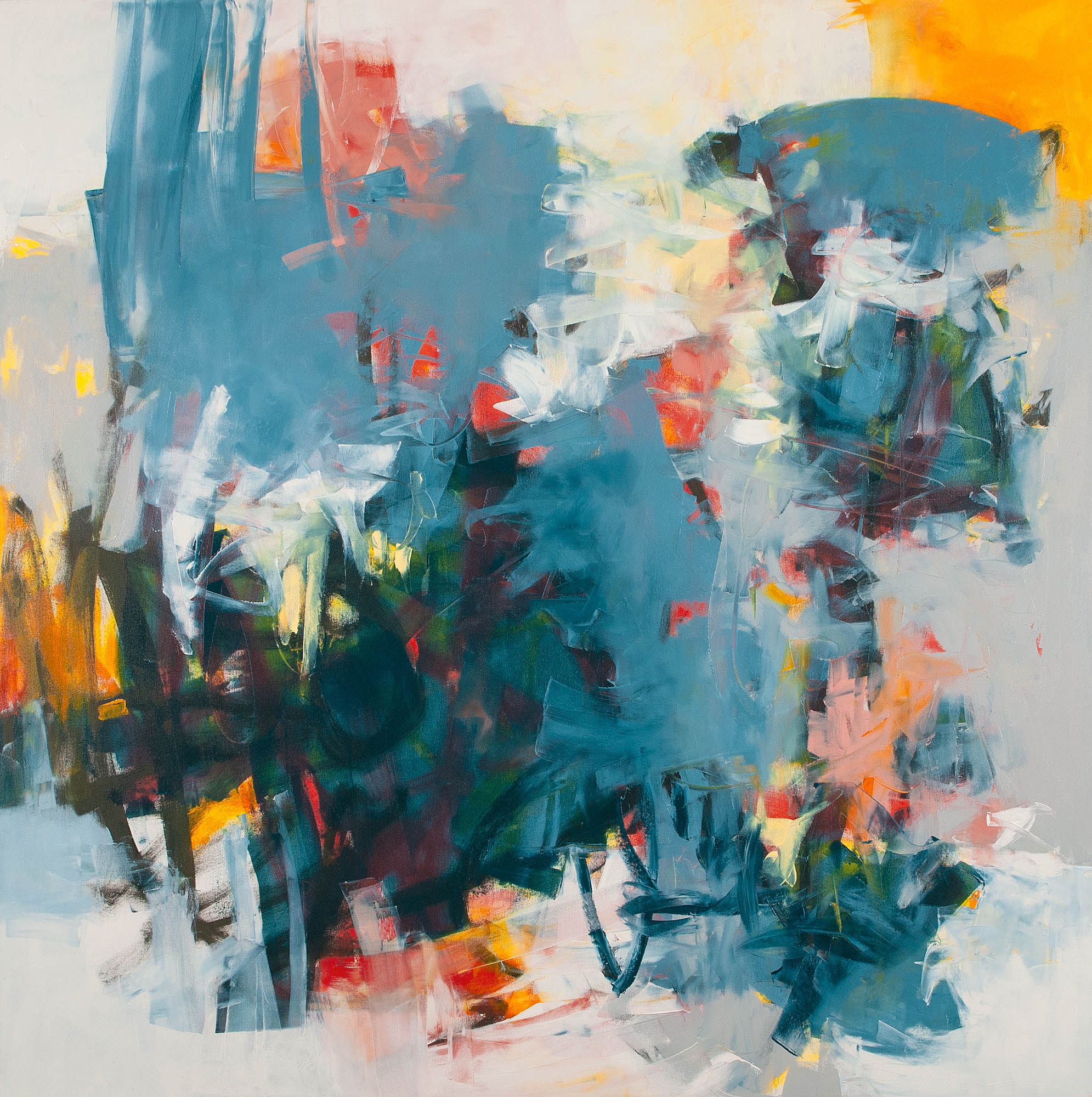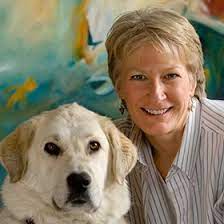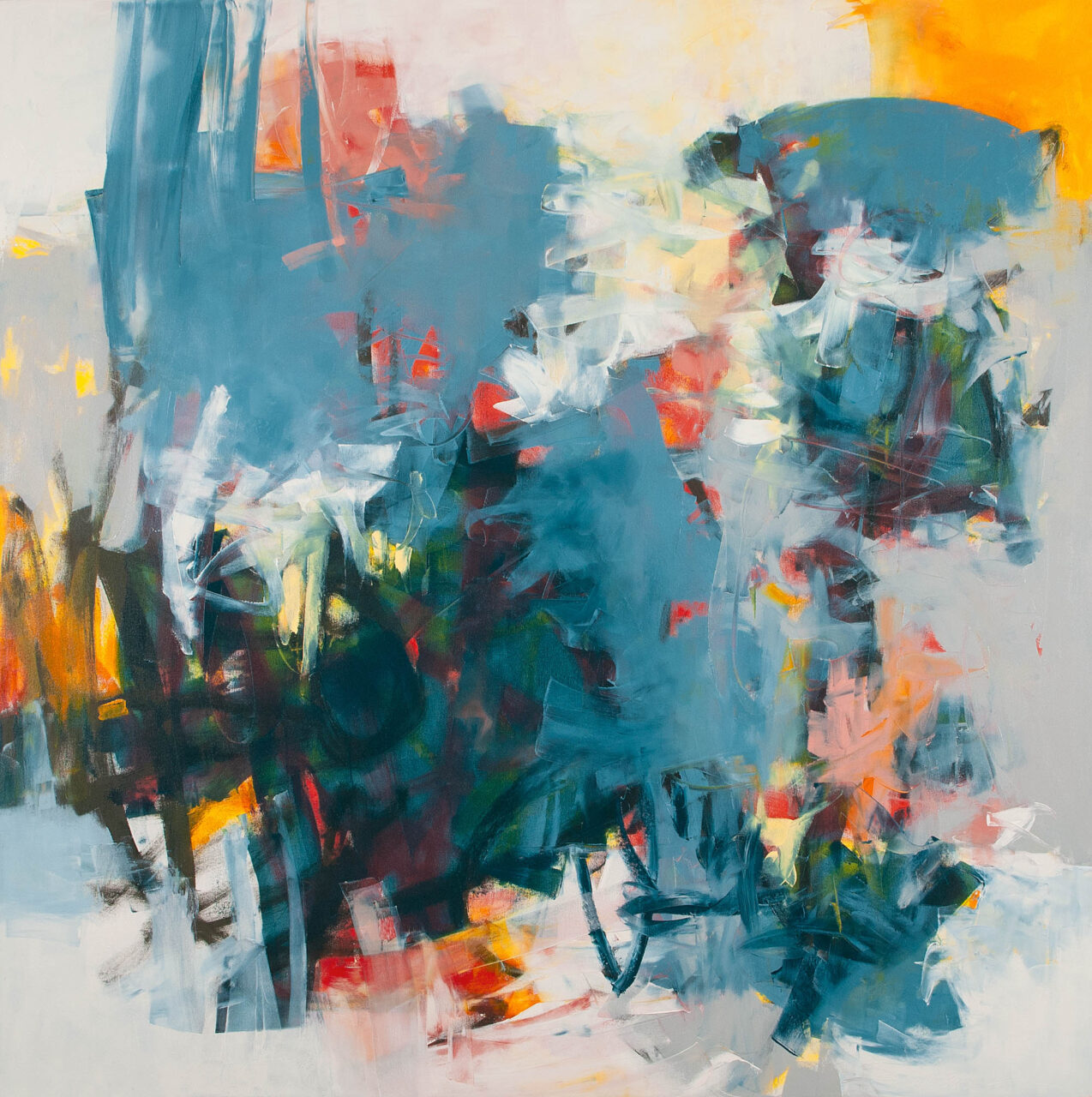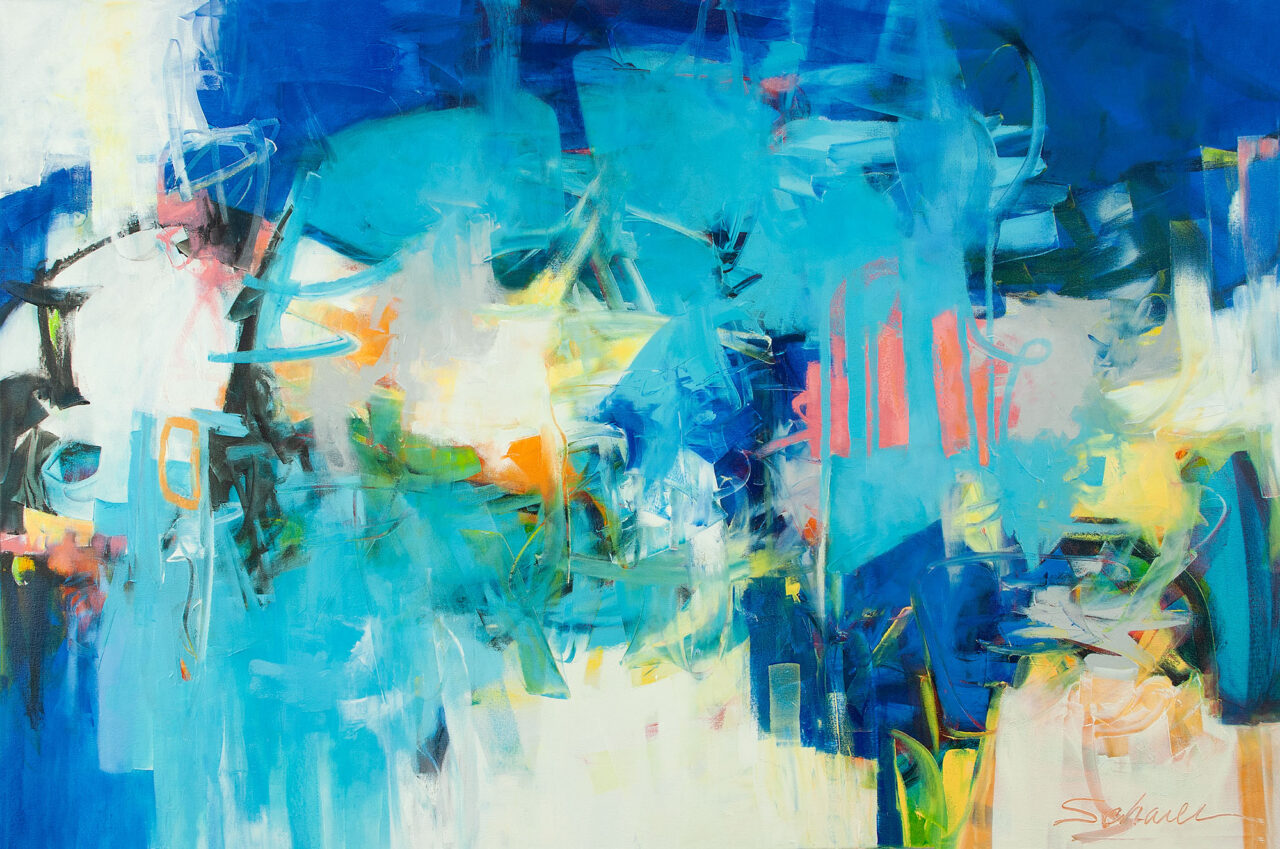
02 Jan Slate Gray January 2024: “All The Good Stuff,” a group show!
Thursday, January 4, 2024, marks the first Telluride Arts’ Art Walk of the New Year. Participating venues are open 5-8pm, hosting receptions to introduce new exhibits and artists. Throughout the month Slate Gray Gallery presents “The Good Stuff,” up through January 30.
Go here for more about Slate Gray.
Go here for more about Telluride Arts and Art Walk.
Please scroll down to read our email interview of featured artist Karen Scharer.

Hudson River School painter George Inness playbook once said: “You must suggest to me reality. You can never show me reality.” Artist Karen Scharer appears to have taken a page from Inness’s playbook.
The surfaces of Scharer’s abstract landscapes are suffused in light; sky and land are one. In other words, her exuberant paintings are devoid of counterfeit or a prior grandeur. There are no clear narratives or anecdotes – though there is a subtext – the artist’s passion for Mother Nature. Her canvases simply and beautifully conveys a personal, vital force with what looks like and feels like unedited authenticity.
Further, Scharer’s work is not simply about the right color, the right brushstroke on the right surface. It is all about synthesizing her vast life experience including, but not limited to, what’s outside her front door.
Bottom line: Scharer’s paintings are all about alchemizing her rich life experiences into gorgeous, non-objective landscapes. A few strokes of her well-educated paint brush tends to contain the immensity of Mother Nature, the artist’s muse.
Or, in the artist’s own words:
“The majority of my work is non-objective. The influence of the natural world is undeniable, but unless I am actually doing on-site landscape work or I get an urge to do abstract florals – both of which I occasionally do – the world I bring to the canvas is pretty much created in my head from a lifetime of input and experiences.”
Karen Scharer’s art, including a number of new paintings, are on display at Telluride’s Slate Gray Gallery in a group show titled “All The Good Stuff,” through January 30.

“All The Good Stuff,” courtesy the artist.

“Lyrical,” courtesy, the artist.

‘Better Days,” courtesy the artist.
To learn more about Scharer, check out the following email interview:
TIO: Your father was a chemical engineer; your mom a housewife and perpetual art student. The couple met in an oil painting class. To what extent did your parents influence the trajectory of your career?
KS: There is no doubt that my parents’ strong interest in art was key to laying a foundation of fascination with art in my very early years. I know that later on they were both extremely proud of my success as a professional artist. But, having been children of the depression, they might not have been thrilled if I had pursued a painting career prior to having a “real job.” However, once I achieved a couple decades of success in the corporate world, they could enthusiastically support my efforts at an art career without worrying about whether that path could be financially viable. In fact, toward the end of my IBM career, my father once asked me “When are you going to quit and just paint? “
TIO: You have been painting for over three decades, but you hold a degree in forestry from the University of Montana. Please connect those dots.
KS: My degree in forestry came about as a result of a deep connection to the natural world which I felt even as a very young child. That connection is another strong influence from my father. To this day I am more comfortable wandering in open fields and forests than I am in any urban environment. The education I got in many of the physical, biological and environmental sciences greatly enhances my respect and appreciation for the incredible planet we live on. The desire for my paintings to honor and reflect the beauty of that world is at the core of what drives my work.
TIO: Out of the gate you were not painting abstractions nor were you painting in oil. Briefly outline the evolution of your discipline.
KS: The evolution of my work was very gradual, and not very intentional. I have always painted what interested me, and my decisions to try different approaches and media mostly came out of wondering “what if”? Until I decided I wanted to be a professional artist, there wasn’t any reason to try to maintain a recognizable style or consistent medium, so I tried different things. Ultimately, I ended up (at least so far!) painting non-representational work in oil because as I worked with a medium, I would discover things I saw as its shortcomings, and would try something else to find a solution. I ended up doing non-representational abstraction because that is what best holds my interest and keeps me excited about working. I enjoy the challenge of creating an impactful image using only the basic concepts of color and design to convey an idea, rather than relying on something recognizable to communicate. I believe that challenge is what has compelled me to continue painting for all these (37) years.
TIO: Your move from a small community near Rocky Mountain National Park to Pueblo West Colorado impacted your work big time. Please explain, especially in terms of the new paintings up at Slate Gray in January.
KS: The truth is that because my paintings are a product of being alive, engaged, and reasonably observant for 70+ years, it’s pretty much impossible for me to detail the specific location or timeframe of the inspiration behind any one image. Although my work has certainly evolved over time, the evolution has been more cyclical than linear, with palettes, moods and themes appearing and fading multiple times over the years, as different influences and events arise and draw from the past.
TIO: Clearly your work is very much influenced by your immediate surroundings. But your extensive travels also come into play on canvas. Do you tend to blend home and away in your abstractions?
KS: In many ways, the answer to the previous question is also the answer to this one. Home and away are certainly blended in my work, as are many things that I have observed and experienced either recently or sometime in the past. I might be keenly aware of some influences; others are subconscious enough that I probably couldn’t identify them. I do think my current surroundings and the events and people I am now interacting with have a greater influence. But I would describe that as being more like the seasonings that give a recipe its character, rather than the basic ingredients that determine whether the dish is fish or fowl. In most cases, the larger themes and ethos of my work derive from 70+ years of living and observing, not from what I did or saw yesterday.
TIO: Please talk about your process.
KS: All of my paintings begin with an underpainting comprised of three layers of paint: yellow, then red, and then an almost-black charcoal gray. The work has to dry between each of the layers, so the underpainting process takes three days.
I typically move several canvases through this process at a time, and there is only a slight relationship between the eventual design of the underpainting and the finished work. This part of the process is mostly just to give me a structure and some basic color to work with.
The really creative part of the process comes when I am actually ready to build on the underpainting.
That real “painting” process is a bit mysterious even to me. I work very intuitively, attempting to interact with the paint by feel, trusting that my years of practice and experience will ultimately allow me to see where the painting needs to go to be successful. Sometimes pieces come together very quickly, in as little as two or three additional painting sessions. Sometimes they don’t resolve for weeks or months. Occasionally they don’t resolve at all, and I cut them up and start over on a new canvas.
TIO: Your upcoming show at Slate Gray is a mix of older and much newer images. Please help your viewers understand what subtle changes to look for when they study the collection as a whole. Please be specific, with titles and details about the new work in particular.
KS: Anything painted in the last five years or so I would consider “new work.” The newest piece that will be at Slate Gray is “A Dance For The Seasons” completed within the last couple of weeks.
The one characteristic of the piece that most identifies it as recent is the liveliness of the strokes, which have been left mostly unedited. “Finding Light 1” is one of the older pieces at Slate Gray, and the relative calm of both the palette and the mark-making on that work is indeed something that was more often seen in my older paintings.
Having made those two observations however, I can find paintings from 2010 that are filled with lively, unedited strokes, and I have done multiple paintings in the last two or three years that are very serene.
I do tend to revisit palettes and objectives and themes, and find old approaches can be very useful in exploring new ideas.
In all my paintings, however, the interplay of contrast, movement, texture, balance, shape, line and color creates images that draw the viewer into my creative process, inviting them to see not just with the eye, but also with the heart. Inspiring the viewer to respond to the images I have created is a critical part of bringing each painting to life.
TIO: What do you hope the Slate Gray audience will take away from your show?
KS: I hope the work will connect with viewers in a way that is more basic and universal than just “pretty paintings.” I have a strong sense of optimism about people and our ability to overcome obstacles and build a better world where all species – and the planet – can survive and thrive. I hope my art conveys the sense of optimism and gratitude I have for the incredible world we live in. I’d like to think my paintings are inspiring and up-lifting. And I hope those are the feelings viewers will take away from ‘All The Good Stuff.”


Sorry, the comment form is closed at this time.